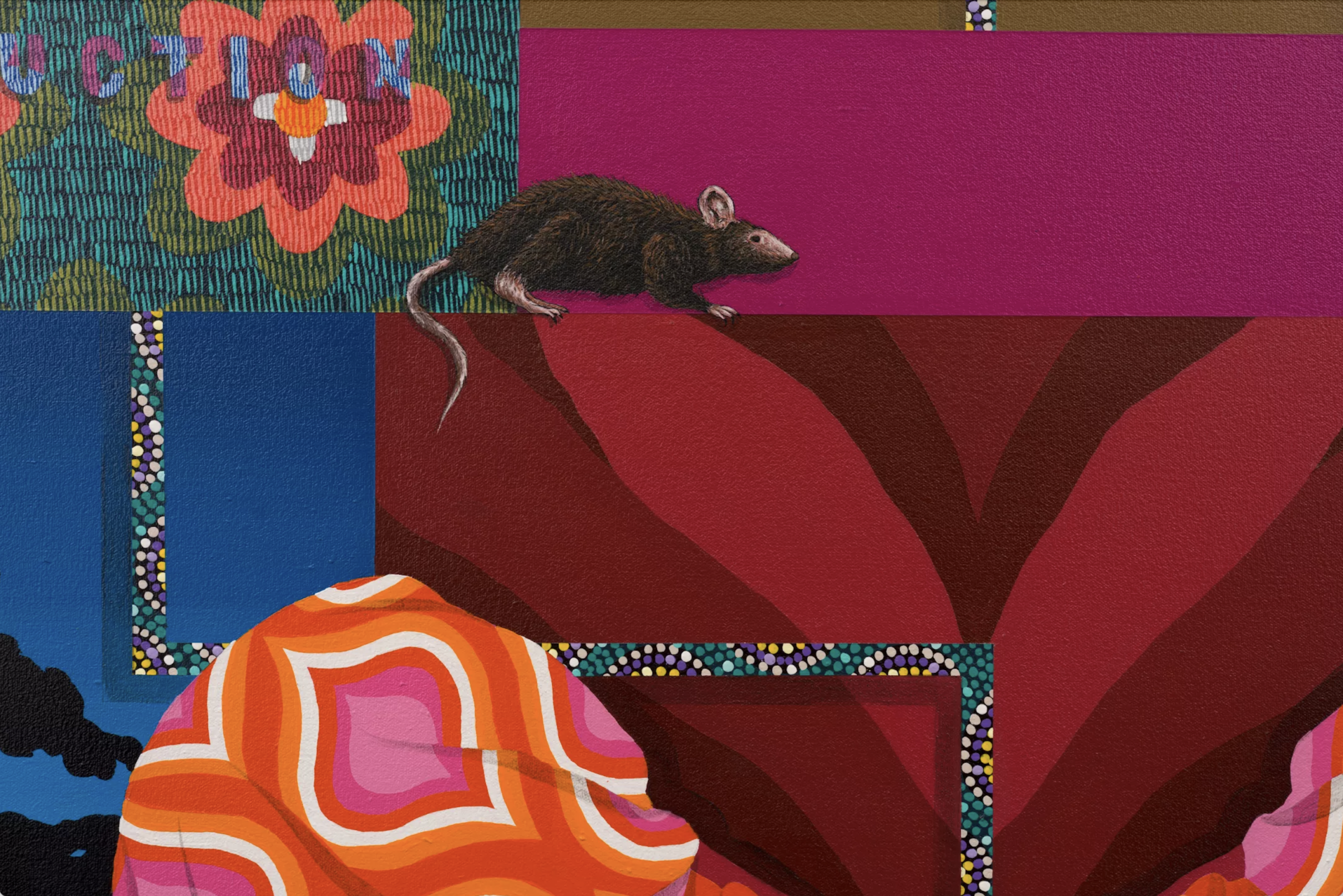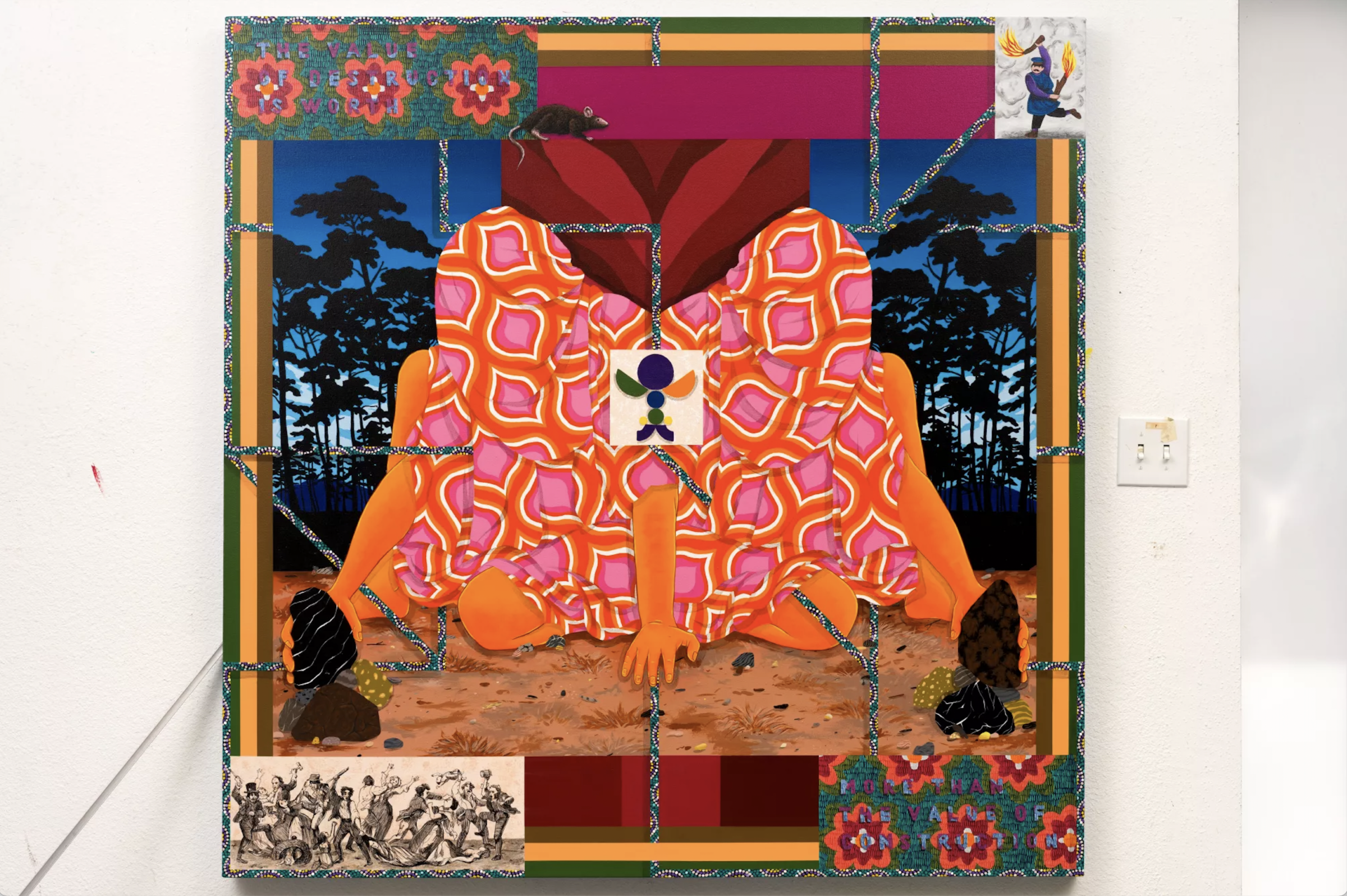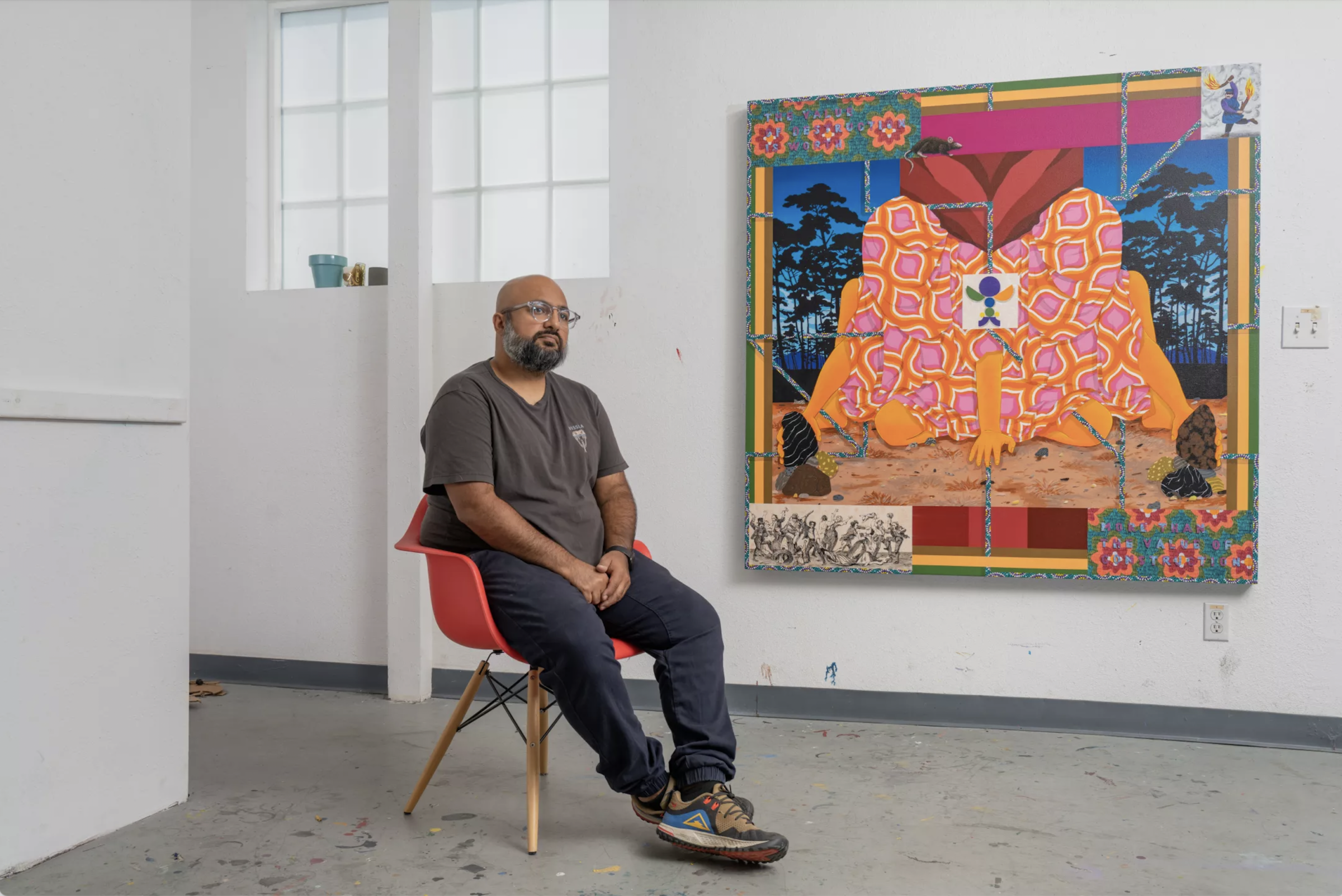“The Value of Destruction Is Worth More Than the Value of Construction,” 2022 acrylic on canvas 5’x5′ courtesy of the artist and Shulamit Nazarian, Los Angeles, (Yubo Dong/For The Times)
BY AMIR H. FALLAH
OCT. 19, 2022 7 AM PT
All of my art starts from a very personal place. In a lot of ways, the work is autobiographical, dealing with me coming to terms with being an immigrant in America, being a refugee in America and straddling two cultures, one very conservative, the other one very liberal. One very old, one very new. It can be confusing — do I think of myself as just an American? Or am I Iranian American? What does it mean to distinguish between the two? I’m realizing that even when I make portraits of other people, what I’m really exploring is my own identity.
 “A lot of my work deals with taking disparate symbols from various cultures and putting them together to tell a parable, a lesson, to describe a moment or talk about an anxiety or fear that I have,” says Amir H. Fallah. (Yubo Dong/For The Times)
“A lot of my work deals with taking disparate symbols from various cultures and putting them together to tell a parable, a lesson, to describe a moment or talk about an anxiety or fear that I have,” says Amir H. Fallah. (Yubo Dong/For The Times)
For the last 12 years, I’ve been making these paintings of veiled figures, where their physical likeness is hidden. I was thinking about how physical likeness does a terrible job of telling the world who you are and where you come from. My wife’s a redhead, she looks Irish, but she’s Puerto Rican. Her entire life she’s been misidentified, culturally and ethnically. And then I’ve also had a very similar experience because I’m dark-skinned for an Iranian. I’ve been misidentified my entire life, even by other Iranians. Both of us have been misidentified based on our physical features and skin. I started thinking: How do you take this history of portraiture, which is based on physical likeness, and how do you expand it, deconstruct it, broaden it? How do you create a portrait that’s a truer representation of someone? That’s where the veiling of the figures came in, when you hide what someone physically looks like, when you take away their natural skin color and make the body an armature to put things on top of — how can you describe people in other ways?
In this piece, there are references to that body of work, obviously, with the veiling. But in this painting, which is part of a larger body of work that I’m making, the patterning on the fabric becomes very important. The patterning is this mod, kind of “Mad Men”-era style, which was very prominent in America. Between the 1950s and ’80s, these types of patterns were found everywhere, from wallpaper to clothing. For me, that patterning becomes a symbol for the Western middle class. This was also the time when America and Britain essentially started a coup in Iran and overthrew its democratic government. The effects of that initial coup are still being felt today and destabilized generations of Iranians.
 “Beauty is an important element in my work. It’s a way to seduce the viewer, to grab their attention and have them stay with the work a bit longer,” says Amir H. Fallah.(Yubo Dong/For The Times)
“Beauty is an important element in my work. It’s a way to seduce the viewer, to grab their attention and have them stay with the work a bit longer,” says Amir H. Fallah.(Yubo Dong/For The Times)
The title of the piece is “The Value of Destruction Is Worth More Than the Value of Construction.” You have a Rorschach-ed figure representing different polarities, good versus bad, right and wrong, East and West. The figure is piling rocks on top of one another. It’s a bit ambiguous — are they building or destroying? Is it the beginning or the downfall of civilization? Sometimes it can be a bit of both. A state of cultural limbo.
A lot of my work deals with taking disparate symbols from various cultures and putting them together to tell a parable, a lesson, to describe a moment or talk about an anxiety or fear that I have. So, although the painting isn’t a portrait of me, per se, it encompasses how I see the world.
Beauty is an important element in my work. It’s a way to seduce the viewer, to grab their attention and have them stay with the work a bit longer. It also counters the weight of the subject matter of the paintings. Once I have their attention I want them to stay and dig deeper. It’s an old strategy that has its roots in religious sculpture and painting: Grab the viewer’s attention by impressing them and then warn them about the evils of the world.
Amir H. Fallah is a Los Angeles-based artist working in a range of media, including painting, sculpture and public installation. He exhibits across the United States and internationally, and has works in the permanent collections of the Los Angeles County Museum of Art, Deste Foundation for Contemporary Art and Birmingham Museum of Art, among others. Fallah has upcoming solo exhibitions at the Fowler Museum, opening Jan. 22, and at Shulamit Nazarian Gallery, opening in February of 2023. @amirhfallah


